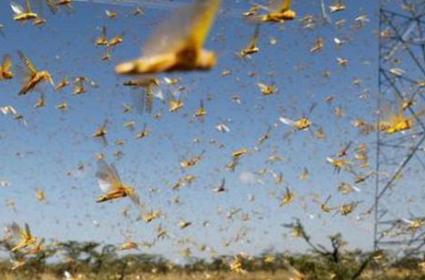Locusts Spotted On Delhi Outskirts, Sehwag Shares Video

NEW DELHI: After entering Haryana's Gurugram, desert locusts have entered at the outskirts of the national capital. Videos from Delhi's Chhatarpur emerged where the locusts are seen flying on Saturday, a channel reported.
Officials informed Delhi's Environment Minister Gopal Rai on Saturday that a small swarm of locusts has also reached the Asola Bhatti area in South Delhi, as reported by a news agency.
Rai held an emergency meeting today and asked the national capital’s south and west districts’ administrations to remain on high alert.
Cricketer Virender Sehwag also took to Instagram to share a video of locusts swarm 'right above his house' on Saturday.
The skies over many parts of Gurugram were filled with desert locusts that descended on the town. The insects touched the Delhi-Gurugram border but did not enter Delhi.
The swarms of locusts, spread across two kilometres, moved from west to east. They entered Gurgaon around 11.30 am, K L Gurjar of the Locust Warning Organisation, the Ministry of Agriculture, told the news agency. The pests were headed towards Faridabad and Palwal in Haryana.
Alarmed at the invasion of the locusts, which settled on trees, rooftops and plants, many residents of Gurugram shared videos from their high-rise perches. These were spotted in places such as Beverly Park, Garden Estate and Heritage City as well as buildings in Sikanderpur in the high-rise town bordering Delhi.
What are Locusts?
Broadly four species of locusts are found in India -- desert locust, migratory locust, Bombay locust and tree locust. The desert locust is considered the most destructive. It multiplies very rapidly and is capable of covering 150 kilometers in a day. This insect, a type of a grasshopper, can eat more than its body weight. A one square kilometer of locust swarm containing around 40 million locusts can in a day eat as much food as 35,000 people.
Experts blame the growing menace of desert locusts on climate change. They say breeding of locusts is directly related to soil moisture and food availability.
In May, India battled a devastating desert locust outbreak. The crop-destroying swarms first attacked Rajasthan and then spread to Punjab, Gujarat, Maharashtra and Madhya Pradesh.



















